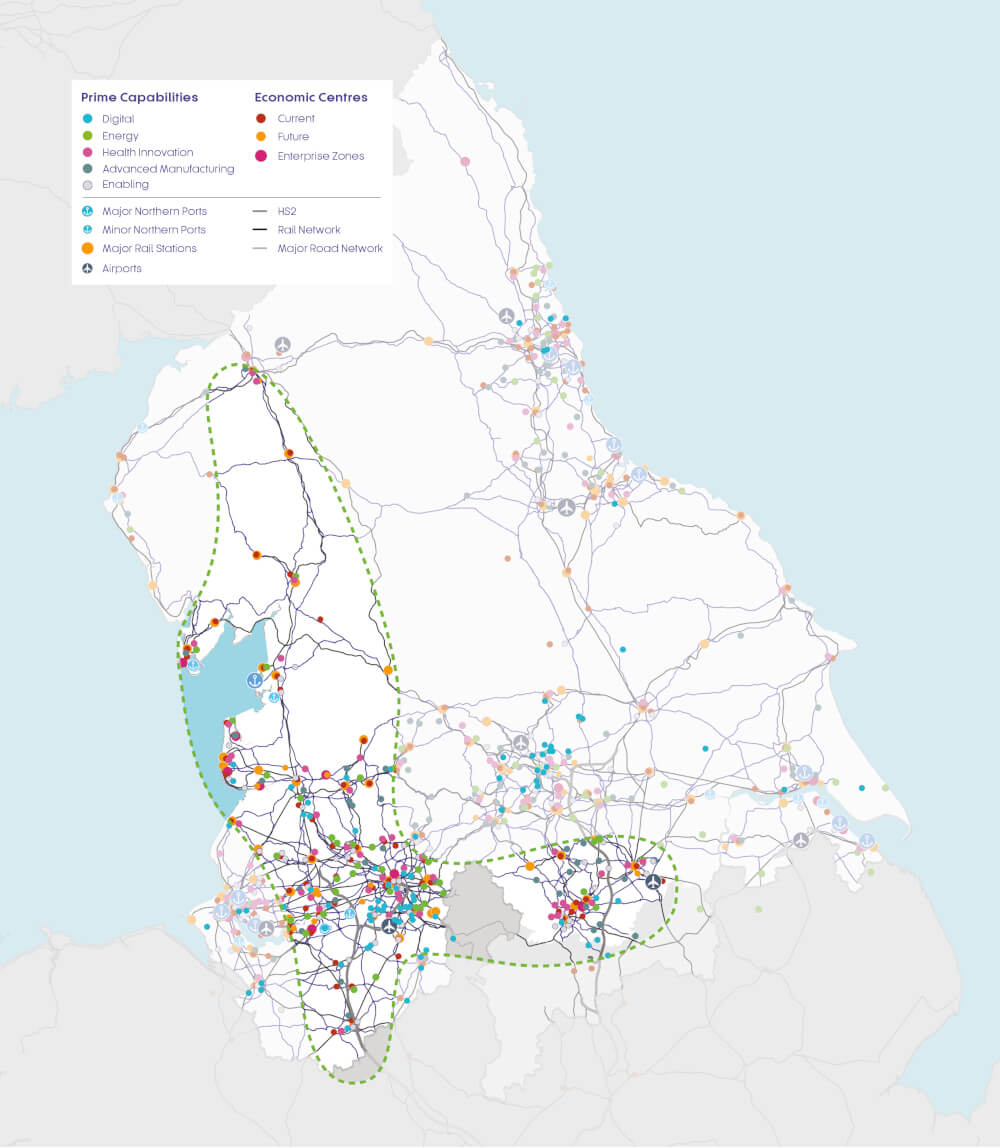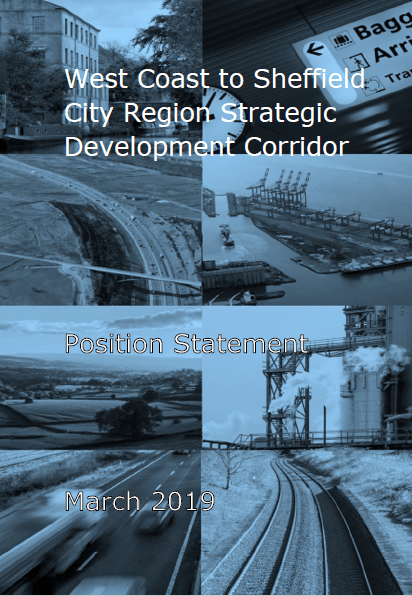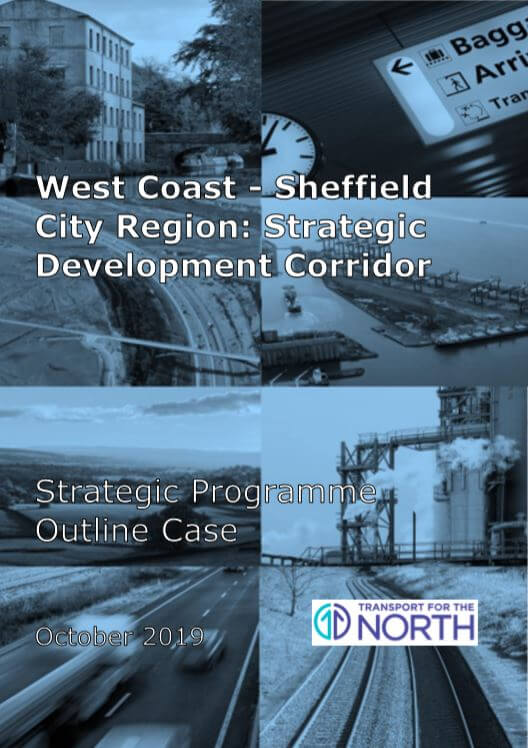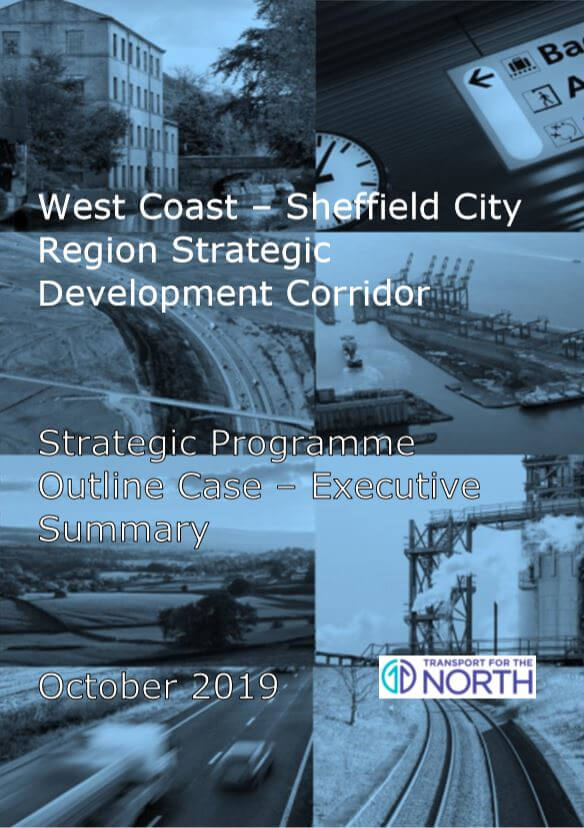







Our work on this corridor is looking at the case for improving connections for people and businesses and exploring the options for improving rail connectivity for both passengers and freight.
The corridor looks to strengthen the strong and growing assets in advanced manufacturing, health technology, digital businesses, and research centres in the South Yorkshire Mayoral Combined Authority (formerly, Sheffield City Region) and those in Lancashire and Cumbria.
The potential economic links between the two areas are not served well by the existing rail network, and so this corridor needs to integrate with future high speed rail connections as well as complement investments being pursued in road improvements in the North West and across the Pennines. There is also strong demand for growth on this corridor through to Scotland, for passengers and freight.

The significant economic developments in this corridor include the Samlesbury Enterprise Zone; Blackpool Airport Enterprise Zone which is home to the National Energy College; the Sheffield City Region Advanced Manufacturing Park which is home to the Nuclear Catapult Research Centre; the subsea technologies, renewable energy, and marine, nuclear and materials engineering cluster in Barrow-in-Furness and Ulverston; the Doncaster National High Speed Rail College; and the established base for polymer science, nuclear and renewable energy on the Fylde Coast. Additionally, the corridor hosts world-class higher education providers (for both teaching and research), technical colleges, and specialist institutions.
Greater Manchester sits between these two clusters and, in addition to forming part of the expertise in these sectors, it provides access to professional and financial services which support the prime capabilities. Bringing all these centres of research closer together by improving connectivity will increase productivity and support collaboration and innovation.


Further north the corridor provides direct connectivity to the Scottish Borders and Central Scotland, hosting important manufacturing, energy and professional and financial services assets with growing links to the North of England.
The corridor is also home to a major visitor economy, with Cumbria and Blackpool acting as assets for the UK economy. Growth of this sector is dependent on enhanced strategic connectivity and access to international gateways (including airports in Manchester, Sheffield, and Carlisle, and ports at Barrow and Heysham) across the North.

Work on this corridor will consider the following pan-northern objectives:
• Increase efficiency, reliability and resilience in the transport system
• Transform economic performance
• Improve opportunities across the North
• Promote and support the built and natural environment
Improving transport connections, particularly to the international gateways within this corridor, would support economic growth and attract businesses and investment to the North creating jobs and opportunities across the North.
Potential improvements to transport infrastructure will consider the impacts of:
High quality design, with potential environmental and whole life cost benefits.
The potential of new transport technologies, including electric vehicles, smart and adaptive traffic management and communication systems, and connected and autonomous vehicles.
Behaviour change interventions
impacts and inter dependencies with other strategic transport studies and programmes

In March 2019 we published a Position Statement to summarise the issues identified and long list interventions to date for this corridor.
Following the modelling and assessment of our long list of interventions we have completed a Strategic Outline Programme. The interventions proposed consider higher quality design solutions, with potential environmental and whole life cost benefits; the impact of future labour market trends, consideration of new transport technologies, behaviour change interventions; and the impacts and inter-dependencies with other National and Transport for the North sponsored Strategic Transport studies and programmes.
This provides evidence towards TfN’s Investment Programme by providing a pipeline of projects that would support economic growth in the North between now and 2050.

Position Statement for the West Coast to Sheffield City Region Strategic Development Corridor

Strategic Programme Outline Case (SPOC) for the West Coast - Sheffield City Region Strategic Development Corridor

Strategic Programme Outline Case (SPOC) Executive Summary for the West Coast - Sheffield City Region Strategic Development Corridor
Click on the buttons below for more information on each corridor
Connecting the Energy Coasts Central Pennines Southern Pennines West and Wales East Coast – Scotland Yorkshire – Scotland
Strategic Development Corridors
CLOSE POPUP [X]